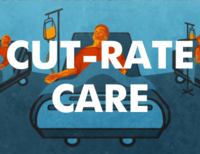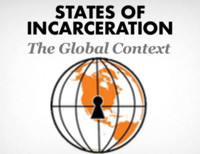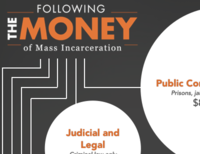Connecticut profile
Connecticut has an incarceration rate of 326 per 100,000 people (including prisons, jails, immigration detention, and juvenile justice facilities), meaning that it locks up a higher percentage of its people than almost any democratic country on earth. There are also more than 30,000 people in Connecticut on probation and parole. Read on to learn more about who is incarcerated in Connecticut and why.
11,000 people from Connecticut are behind bars
Using 2020 census data, we looked at where people in Connecticut prisons come from. We found mass incarceration harms all corners of the state.
Rates of imprisonment have grown dramatically in the last 40 years
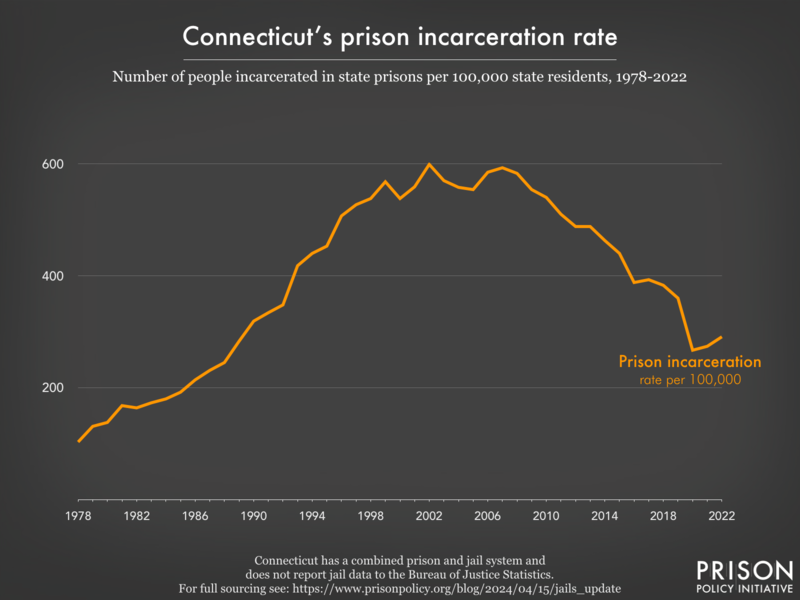
- total numbers rather than rates.
- Women’s prisons: Incarceration Rates | Total Population
- Men’s prisons: Incarceration Rates | Total Population
Today, Connecticut's incarceration rates stand out internationally

People of color are overrepresented in prisons and jails
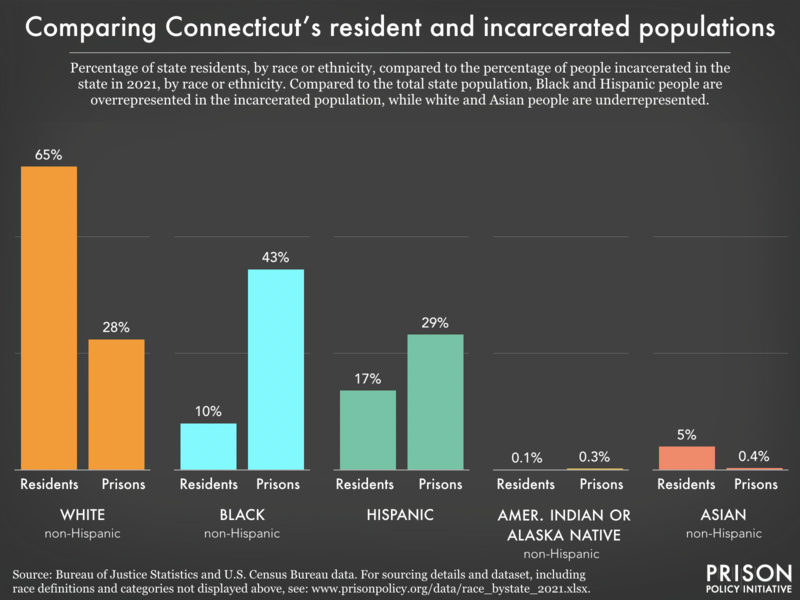
Connecticut's criminal justice system is more than just its prisons
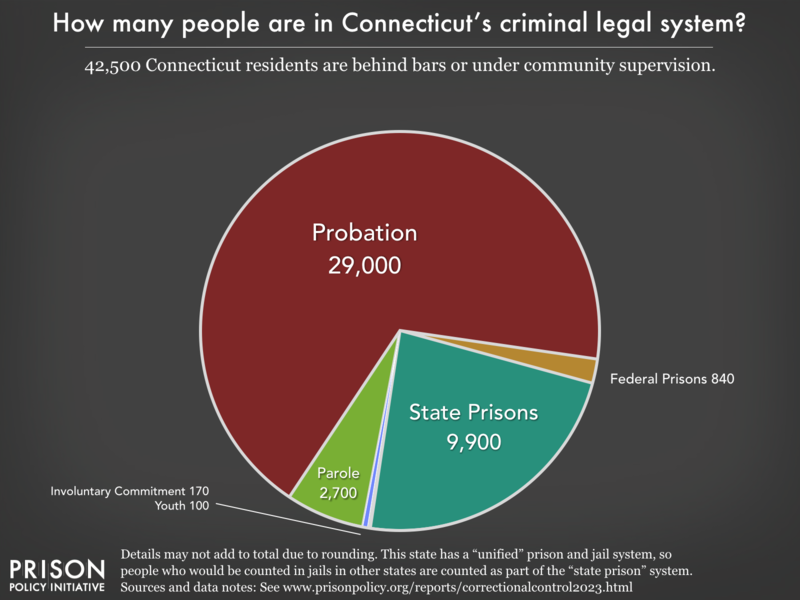
Reports and briefings about Connecticut's criminal legal system:
Filter to show
- Connecticut makes medications for opioid use disorder available in some of its prisons. Why is getting treatment for substance use disorders so difficult across the US carceral system?
- Despite reducing its prison population at the beginning of the pandemic, Connecticut's prison population increased 12% between 2021 and 2023.
- Connecticut has been court-ordered to fix its prison healthcare system three times. Why is healthcare behind bars so bad, and what can be done to fix it?
- People on probation in Connecticut are saddled with onerous rules and conditions they must follow every day or risk incarceration.
- Prisons in Connecticut have tablets, but they may be being used to restrict incarcerated people’s access to books and sap them of the little money they have.
- With an incarceration rate of 326 per 100,000 residents, Connecticut locks up a higher percentage of its people than almost any democratic country on earth.
- During the 2020 redistricting cycle, Connecticut successfully reallocated more than 85% of people in state prison back to their home communities, as part of its efforts to end prison gerrymandering.
- Connecticut releases roughly 4,161 men and 319 women from its prisons each year. What is it doing to support them upon reentry?
- The parole board in Connecticut is releasing 37% fewer people and holding 51% fewer hearings since the pandemic started
- Black people in Connecticut are incarcerated at a rate 9.9 times higher than white people.
- Connecticut's choice to criminalize "failure to appear" may be hurting public safety
- The cost of incarcerating older people is incredibly high, and their risk of reincarceration is incredibly low, yet 11% of people in Connecticut prisons are over the age of 55. Why is the state keeping so many older people locked up?
- Prisons in Northeastern states, like Connecticut, have seen the greatest increase in deaths during heatwaves.
- Connecticut makes it difficult or even risky for incarcerated journalists to tell their stories.
- Report:
 Excessive, unjust, and expensive: fixing Connecticut's probation and parole problems
Excessive, unjust, and expensive: fixing Connecticut's probation and parole problems - In Connecticut, 11,000 people are incarcerated and another 31,700 are on probation or parole.
- Connecticut offers free e-messaging to or from prisons.
- With prison phone companies exploiting millions of incarcerated people trying to make phone calls, Connecticut stands out for having made calls from prisons and jails free
- Report:
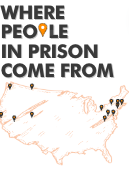 Where people in prison come from: The geography of mass incarceration in Connecticut
Where people in prison come from: The geography of mass incarceration in Connecticut - Bail companies in Connecticut have a track record of avoiding accountability, our report All Profit, No Risk and review of state-by-state evidence show
- Connecticut granted extremely few commutations to incarcerated people in recent years, and granted zero commutations during COVID-19
- Connecticut prisons suspended their $3 medical copay at the beginning of the pandemic. They should eliminate this fee completely.
- People in Connecticut prisons must pay for hygiene items and other basics — and those without cash have to meet strict "indigence" criteria to get financial assistance
- Connecticut prisons charge families up to a 20% fee to transfer money to an incarcerated loved one.
- We gave Connecticut a failing grade in September 2021 for its response to the coronavirus in prisons.
- In May 2021, Governor Lamont signed a bill making Connecticut the 11th state to end prison gerrymandering.
- Connecticut hurts jury diversity by excluding people with felony records
- How many COVID-19 cases in Connecticut communities can be linked to outbreaks in correctional facilities? (data from our report Mass Incarceration, COVID-19, and Community Spread)
- We graded the parole release systems of all 50 states - Connecticut gets an F
- Connecticut incarcerates women at a rate of 66 per 100,000 residents — higher than almost any democratic country on earth.
- People in Connecticut prisons earn as little as 13¢ an hour for their work.
- New animation illustrates the real size of Connecticut Sentencing Enhancement Zones
- Misconceptions about sentencing enhancement zones persist in the Connecticut Legislature
- Reaching too far: How Connecticut's large sentencing enhancement zones miss the mark
- Connecticut organizations call on legislature to end prison gerrymandering
- New fact sheet about prison gerrymandering in Connecticut
- Imported "Constituents": Incarcerated People And Political Clout In Connecticut
- Our letter to the Hartford Courant: Prison Expansion Won’t Aid Local Economy
Other resources
- Research on Connecticut in our Research Library
- Ending prison gerrymandering in Connecticut campaign and resource page
Events
- April 30, 2025:
On Wednesday, April 30th, at noon Eastern, Communications Strategist Wanda Bertram will take part in a panel discussion with The Center for Just Journalism on the 100th day of the second Trump administration. They’ll discuss the impacts the administration has had on criminal legal policy and issues that have flown under the radar. Register here.
Not near you?
Invite us to your city, college or organization.
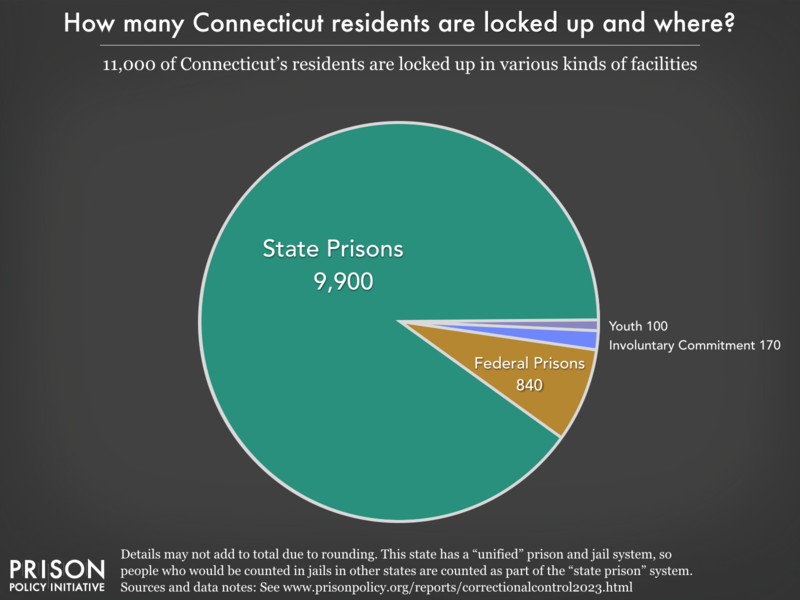
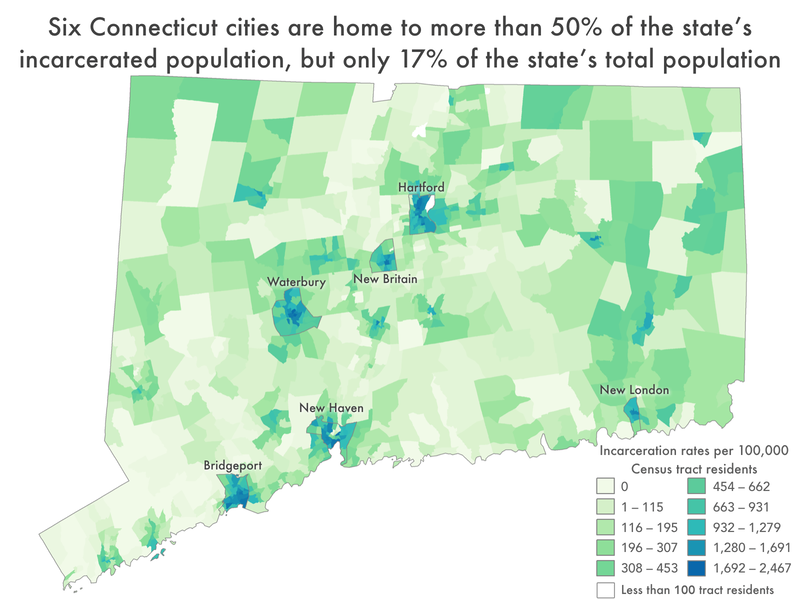
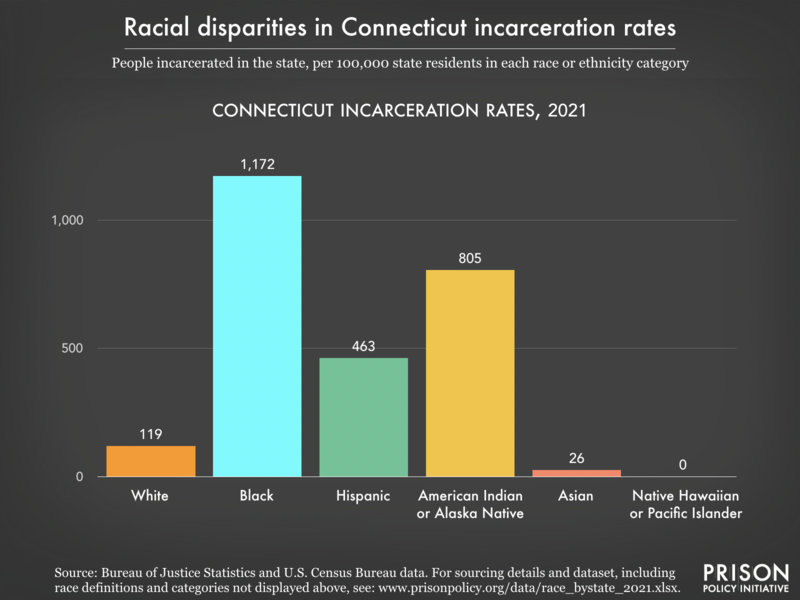
 Excessive, unjust, and expensive: fixing Connecticut's probation and parole problems
Excessive, unjust, and expensive: fixing Connecticut's probation and parole problems Where people in prison come from: The geography of mass incarceration in Connecticut
Where people in prison come from: The geography of mass incarceration in Connecticut